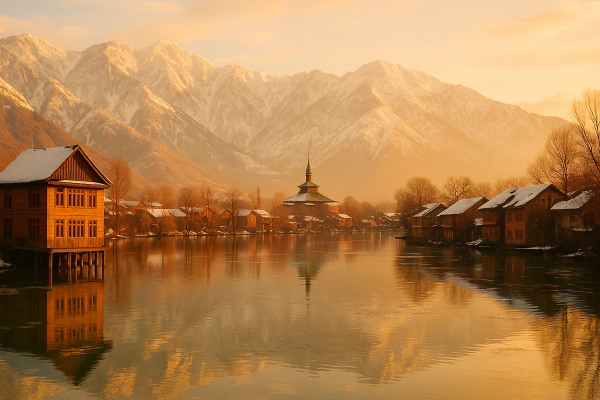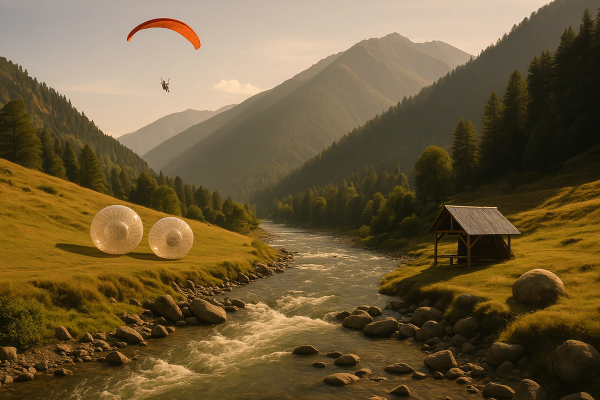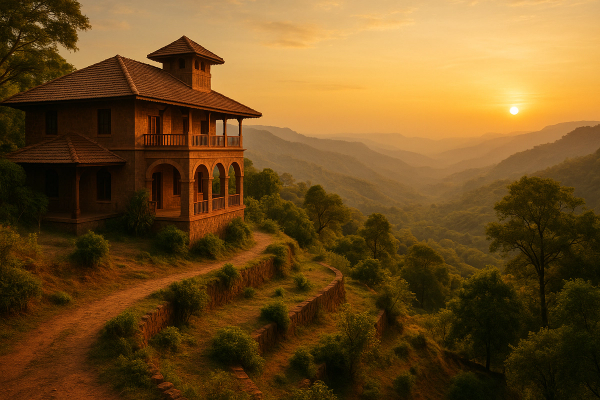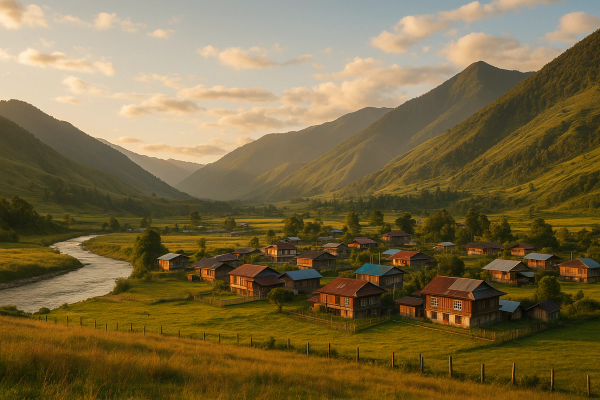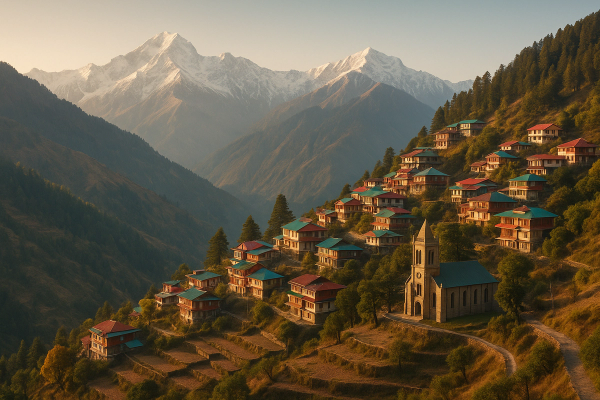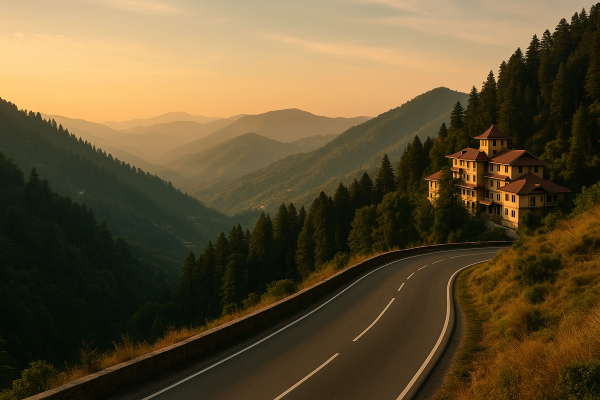Sensory-Friendly India: Autism-Friendly Family Travel 2025 — what actually worked for us#
So, um, we just did India with our autistic kid in early 2025. I know, I know, everyone says it’s loud and crowded and basically a sensory tsunami, which… sometimes yes. But also wow. India surprised me with how many tiny, thoughtful fixes have popped up in the last couple years — airport support, quieter parks, flexible hotels, even museums doing relaxed hours here and there. Not perfect, but we found ways to make it not just doable, but honestly meaningful. Real memories. Real smiles. Some meltdowns, sure, but not the whole story.¶
Why India, and why 2025 specifically#
We’ve been leaning into neurodiversity-friendly travel trends because 2024/2025 felt like the big turn — lots of places catching up to what families like ours actually need. India’s airports started getting more inclusive (more on that in a sec), and the rise of early-morning experiences, small-group tours, and flexible booking policies made it feel like the right time. Plus, our kid’s world is all about textures and patterns and rhythms — the backwaters’ soft slap of water, a temple bell from far away, crunchy dosa, the way light hits old sandstone at 6:30 a.m. That stuff. That’s why.¶
- Bengaluru (BLR), Delhi (DEL), Hyderabad (HYD) — airports have been rolling out Hidden Disabilities Sunflower support in recent years, so wearing the lanyard actually got us gentler guidance through security and boarding in 2025
- Museums and attractions across major cities have started trialing relaxed hours around big awareness days and weekends — not guaranteed, but calling ahead worked more than once
- Hotels and homestays got way more chill on flexible check-in/check-out and turning off doorbells, no automatic housekeeping knocks, etc. if you ask nicely and early
Visas, entry, and the stuff I accidentally almost messed up#
India’s e-Visa is still the way to go in 2025 for most nationalities — e-Tourist visa options include short 30-day entries and longer 1-year or 5-year multiple-entry. Fees vary by country and duration (don’t quote me an exact number, it changes), but the application was straight forward: passport must have at least 6 months validity, a digital photo, and you upload your bio page. We got ours in like 72 hours. Print the approval email and bring it. Some folks get asked for return tickets and address of stay, so have those saved. If you’re from countries not eligible for e-Visa, do the consular route well in advance.¶
Little detail people forget: we listed our child’s needs under special assistance with the airline before flying, which in 2025 is more recognized in India thanks to updated DGCA disability guidelines. It meant no weird arguments at boarding, and staff were trained to be kind (bless the person at BLR who just handed us tissues and didn’t rush us when a meltdown hit, I could cry thinking about it).¶
Where we went and how we sanded down the sensory edges#
We did a loop: Bengaluru for soft landings and parks, then Kerala (Kochi and the backwaters), a calm pocket in South Goa, and a short Delhi stop because we wanted the museums and Lodhi Gardens and honestly just to eat everything. We kept things short, early, and spaced out. Lots of outdoor time before the city wakes up, then indoor spaces mid-day when it’s quieter. No night markets, no big festivals — we skipped firecrackers season because that’s a hard no for us. India has seasons of sound: Oct–Nov can be fireworks heavy, March can be Holi chaos (gorgeous, but intense). Shoulder months and early mornings were our secret sauce.¶
Bengaluru: our gentle landing spot#
BLR airport was our first test. We wore the Sunflower lanyard and told staff we’re an autism family — they didn’t make a Big Deal of it, just steered us to a calmer line and didn’t rush. In the city, Cubbon Park at sunrise is like a forest whispering. Our kid lay on the grass and watched crows for an hour. Indian Music Experience Museum (IME) was a hit because sound zones are clear; we called ahead and asked about quieter slots. They couldn’t promise silence, but weekday mornings were mellow. Food-wise, idli and curd rice saved us on more than one “everything feels too much” day.¶
Kerala backwaters: movement + calm#
We booked a day cruise near Alleppey instead of an overnight houseboat — calmer for us, shorter commitment, fewer surprise noises at midnight. The slap-slap of water against the hull was literally therapy. Kochi’s Fort Kochi area can get chatty later in the day, but early mornings along the sea wall were dreamy. If you’re tempted by Kathakali shows (they’re iconic), look for shorter intro sessions; full performances can be loud and long. Our kid loved the makeup demo part, not the drums.¶
South Goa: sand therapy, no techno#
We stayed near Agonda and did sunrise beach walks, low seas, minimal speakers. The beaches have pockets where cafes keep the music down until late morning — ask around, folks will point you to quiet places. Pricing in 2025 for mid-range beach stays was around ₹6,000–12,000 a night for a family room during non-peak months, and much higher in Christmas/New Year weeks. Book early if you want a ground-floor unit (stairs + excitement + tired child = not ideal).¶
Delhi: pick your calm, avoid the blasting horns#
I love Delhi, but it’s a lot. We built our day around Lodhi Gardens — it’s wide, green, old trees, soft dogs playing, people walking quietly. The National Rail Museum was surprisingly good for us; big open areas, lots to look at, not too many sudden noises. We stayed in Aerocity because newer hotels there tend to have better soundproofing (ask for inner-facing rooms away from the road). Air quality can dip Oct–Jan, so we watched AQI like hawks and did indoor days when it hit yellow/orange. 2025 has still had air alerts off and on — masks and a small air purifier for the room helped.¶
Planes, trains, and what actually helped day to day#
Domestic flights in 2025 were reasonable if booked early (IndiGo was our default, Air India totally fine post-refresh). We always request special assistance and early boarding, and sit near the front on the aisle. Some airports now offer fast-track or family lanes at busy times — it wasn’t everywhere, but asking didn’t hurt. For trains, IRCTC booking still opens months ahead, and Vande Bharat routes were smoother and quieter than older trains. AC Chair Car coaches have fewer random noises, and we brought ear defenders anyway. No official “quiet coach” in India yet, but late morning trains were calmer than crack-of-dawn rush ones.¶
Payments and day-to-day 2025 practicals (this stuff matters)#
UPI is basically life in India now. In 2025, foreign travelers can get UPI-enabled prepaid options at major airports or partner outlets — we grabbed ours at BLR and it made food stalls and cabs way easier. Carry a backup card though because not every small shop is set up for tourists on UPI yet. eSIMs worked great; we activated a regional eSIM before arrival so we weren’t wrestling with SIM paperwork after a night flight. Tap-to-pay at bigger stores is normal now. We also saved our driver’s phone number and WhatsApped them when leaving a noisy spot — fewer street haggles equals less sensory overload.¶
Health, heat, and 2025 safety notes we actually used#
Heat advisories have been a thing the last couple years. In 2025, we did early morning activities, long shaded lunches, and post-3 p.m. indoor time when the sun got rude. Hydration salts saved us. Monsoon varies by region (June–Sep-ish), and mosquitoes wake up like they’re paid to do it — we used repellent and did long sleeves at dusk, because dengue spikes can happen. Food-wise, we stuck to places with high turnover and always asked for “less spice” even though that’s subjective. We carried a laminated card saying “sensory sensitive — quiet table, no sudden loud music please,” which made staff smile and usually worked.¶
Museums and attractions that felt friendly (with caveats)#
We’re big on checking calendars because India has festivals and school groups that can change a place’s vibe. The Indian Music Experience Museum in Bengaluru we already loved. In Kochi, the Kerala Folklore Museum is a calmer browse if you go early. In Delhi, we found weekdays at the Crafts Museum (National Handicrafts and Handlooms Museum) to be gentle — courtyards, weaving demos that aren’t blasting. Hyderabad’s big museums like Salar Jung are massive; pick one wing and bail when done. Some attractions and malls have started trialing “quiet hours” tied to awareness days in 2024–2025, but it’s not standardized — seriously call ahead. Staff often improvise kindness even when there’s no official program.¶
Where we stayed, and how much it cost us in 2025#
A quick reality check on pricing this year: mid-range city hotels in Bengaluru/Delhi were around ₹3,500–9,000 a night for a family-friendly room depending on season. Boutique homestays in Kochi ran ₹2,000–6,000 for a simple double with extra mattress. Goa beach resorts varied wildly — ₹7,000–15,000 in shoulder season, ₹18,000+ in peak holidays. Big-brand 5-star stays in Aerocity or central Bengaluru often hit ₹18,000–35,000 in busy weeks. We paid a bit extra for soundproofing and flexible housekeeping, and didn’t regret it. Honestly, asking the front desk to disable chimes and avoid sudden knocks was the best “amenity” we got.¶
Two places that really got it#
In Bengaluru, our hotel near Ulsoor Lake gave us an inner room and turned off the doorbell; staff left towels outside in a basket so nobody knocked unexpectedly. In Kochi, our homestay had a courtyard and a resident cat who sat exactly where our kid needed a break. Was it fancy? No. Did it feel safe? Totally. Also: white-noise app + travel fan = better sleep than melatonin ever gave us.¶
Food adventures that didn’t end in tears#
Our gentle go-tos: idli, dosa without chutney if tangy is triggering, curd rice, dal + plain rice, paratha with ghee, fruit. We found thali restaurants that let us skip the spicy sides. In Goa, cafés near Agonda had early openings with no music — bliss. In Delhi, we did breakfast at old-school bakeries instead of peak lunch in Old Delhi because the horns and crowd-surge hit different at noon. Carry snacks, always. I wish I was the parent who didn’t live out of a fanny pack of nuts and crackers but here we are.¶
Stuff I wish I knew before we went#
Bring spare ear defenders and a soft brim hat — India’s light is brilliant but hard at midday. Book trains earlier than you think; popular routes fill up fast. Keep hard copies of your e-Visa and hotel addresses because phones die right when you need them. Avoid fireworks seasons if your kid is sound-sensitive. Call museums a day in advance. Ask for inner rooms facing courtyards. And don’t be shy about telling staff what your kid needs — 9 times out of 10 someone will quietly make it better.¶
The little contradictions we lived with#
India is both too loud and strangely quiet. A temple lane at 6 a.m. where you hear only slippers on stone. A train platform at rush hour that feels like standing inside a drum. A dosa that crunches exactly right. A market that’s a nope. We didn’t chase a “perfect” schedule — we chased the next ten quiet minutes. Sometimes we stayed in, watched pigeons, and felt guilty, then realized that was the day our kid needed. Travel doesn’t have to be big to be good.¶
Would we go back?#
Yeah. In a heartbeat. We want to do Kabini and the calmer edge of Nagarhole next time (dawn safaris sound like a sensory win), maybe Sikkim for mountain mornings and tea gardens where the world’s not shouting. India isn’t all gentle and it’s not all fireworks either — it’s layers. In 2025, with airports offering better assistance, UPI for visitors, flexible hotels, and more awareness around neurodiversity, it felt like a door opened we didn’t expect. We’ll walk back through it.¶
Last thoughts and a tiny PSA#
If you’re considering India with an autistic kid, plan early mornings, shoulder season, and honest conversations with hosts. Use the Sunflower lanyard if that feels right. Hydrate. Check AQI. Take breaks like it’s your job. And keep notes of what worked because future-you will forget. If you want more personal trip stories and nitty-gritty planning ideas, I’ve been saving links and rambling long posts over on AllBlogs.in — it’s been crazy helpful for piecing together family travel that actually fits our life.¶




